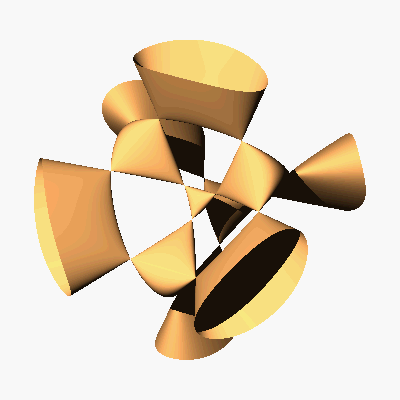

|
Sometimes the geometry of an algebraic variety poses restrictions on the geometry of
its algebraic subvarieties. A beautiful example is the Noether-Lefschetz Theorem which
states that on a general complex algebraic surface of degree greater than three in
three dimensional projective space, any curve is obtained as a complete intersection
of the surface with another hypersurface. In spite of this, Green's density criterion
enabled Ciliberto, Harris and Miranda to prove that the Noether-Lefschetz locus is
dense for the euclidean topology in the space of all smooth degree d > 3 complex
polynomials. Over the real numbers, things are more complicated. The general real
hypersurface in P^3 of degree larger than three still has Picard rank one but real
surfaces with jumping Picard rank are not dense at all in the space of real smooth
degree d > 3 polynomials: the latter is not connected and the real Noether-Lefschetz
locus can miss a connected component entirely. There is a density criterion but it is
much harder to fulfill and can only be applied to one component at a time. Our goal in
this talk is to pose an analogous question in the setting of real abelian varieties
and to prove that in that situation, none of these problems occur. Fixing natural
numbers g, k, and a polarised family of abelian varieties of dimension g defined over
the real numbers, when are real (resp. complex) abelian varieties that contain a real
(resp. complex) abelian subvariety of dimension k dense in the set of real (resp.
complex) points of the base? For each of these densities there is a natural criterion
and surprisingly, they are the same. Various applications are given along these lines,
such as density of such loci in moduli spaces of principally polarised real abelian
varieties, real algebraic curves, and real plane curves.
|